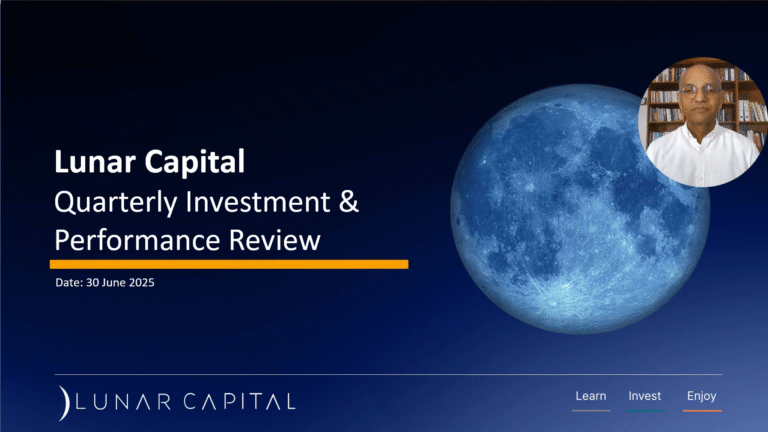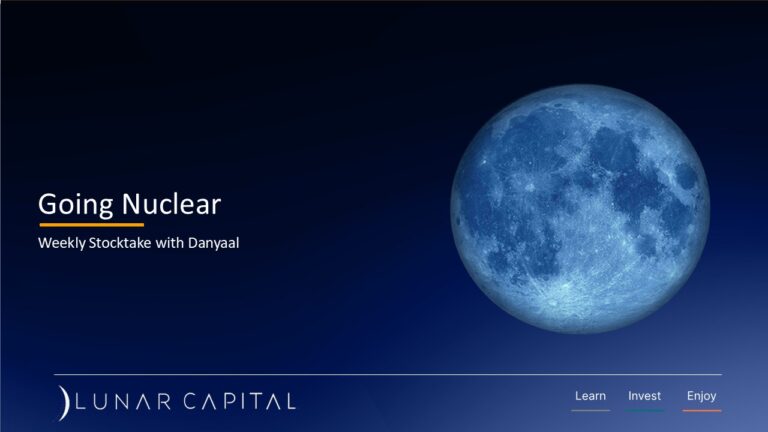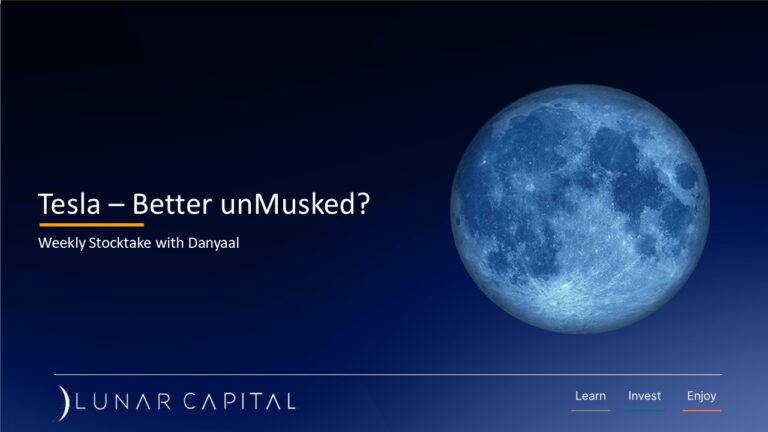Weekly Stocktake with Danyaal
24 March 2023
Key Indicators
| Index / Fund / Rate | Start of Year | Last week | This Week | % change YTD |
|---|---|---|---|---|
| JSE ALSI | 73 049 | 72 528 | 74 695 | 2.25% |
| NASDAQ Composite | 10 467 | 11 631 | 11 824 | 12.96% |
| S&P 500 | 3 840 | 3 917 | 3 971 | 3.41% |
| Prime Lending Rate | 10,50% | 10,75% | 10,75% | 2.38% |
| Lunar BCI WW Flexible Fund | 141,43 | 152.25 | 154.28 | 9.09% |
| USD/ZAR | 16,98 | 18.37 | 18.20 | 7.18 |
| EUR/ZAR | 18,44 | 19.70 | 19.52 | 5.86% |
| Brent Crude ($’barrel) | 85,95 | 72.52 | 74.49 | -13.33% |
Source: Iress
How Quick Can a Bank Run?
Banks generate revenue through Net Interest Income (NII) and Non-Interest Revenue (NIR). NII comes from charging interest on loans to customers and paying less interest on deposits. NIR is earned through transaction facilitation, general fees, and commissions. Banks borrow short and lend long; by taking deposits which can be withdrawn in the short term and investing funds and issuing loans for longer periods. To enable banks to be able to repay deposits, they are required to maintain some of their assets in liquid form. This enables customers to withdraw funds without requiring the bank to sell its assets. However, if depositors demand funds more than the bank’s liquid assets or reserves, the bank would need to raise funds quickly to be able to repay depositors.
Central banks increasing interest rates beyond expectations and maintaining them for longer periods can also lead to problems. This is because higher interest rates cause bond prices to drop. Banks, holding these bonds, incur non-cash losses as they still hold the same number of bonds. If customers perceive that their deposits are at risk and withdraw funds in large amounts, it can force the banks to sell their bonds to meet the withdrawal demands. This leads to further losses for banks. As losses mount, more customers tend to withdraw their funds, and the bank is forced to sell more of its assets.
Silicon Valley Bank (SVB) experienced a similar situation. SVB mainly served the tech industry, and as investments in tech slowed down, companies had to withdraw their own funds to operate. This led to larger cash withdrawals from these companies, without SVB gaining new deposits. The tech industry is closely connected, and news travels fast. So, when companies began withdrawing funds, the news spread quickly, resulting in a faster-than-usual acceleration in withdrawals and ultimately a run on SVB.
Connect with us on social media:
LinkedIn: https://bit.ly/413pDnr
Facebook: https://bit.ly/3ScL7Km
Instagram: https://bit.ly/3ICEjCJ
Lunar Capital on Eastwave Radio
Every Tuesday, at 07h45, Sabir chats with Nazia from Eastwave Radio (92.2 fm, live stream on www.eastwave.co.za) on investing and the markets.
Listen to last week’s radio session here: https://youtu.be/N1mCJ8hyCNk
Click here to access your account to view statements, obtain tax certificates, add, or make changes to your investments.
Our email address is: [email protected]
Read our full Disclosure statement: https://lunarcapital.co.za/disclosures/
Our Privacy Notice: https://lunarcapital.co.za/privacy-policy/
The Lunar BCI Worldwide Flexible Fund Fact Sheet can be read here.
This roundup is prepared for the clients of Lunar Capital (Pty) Ltd. This roundup does not constitute financial advice and is generated for information purposes only.





